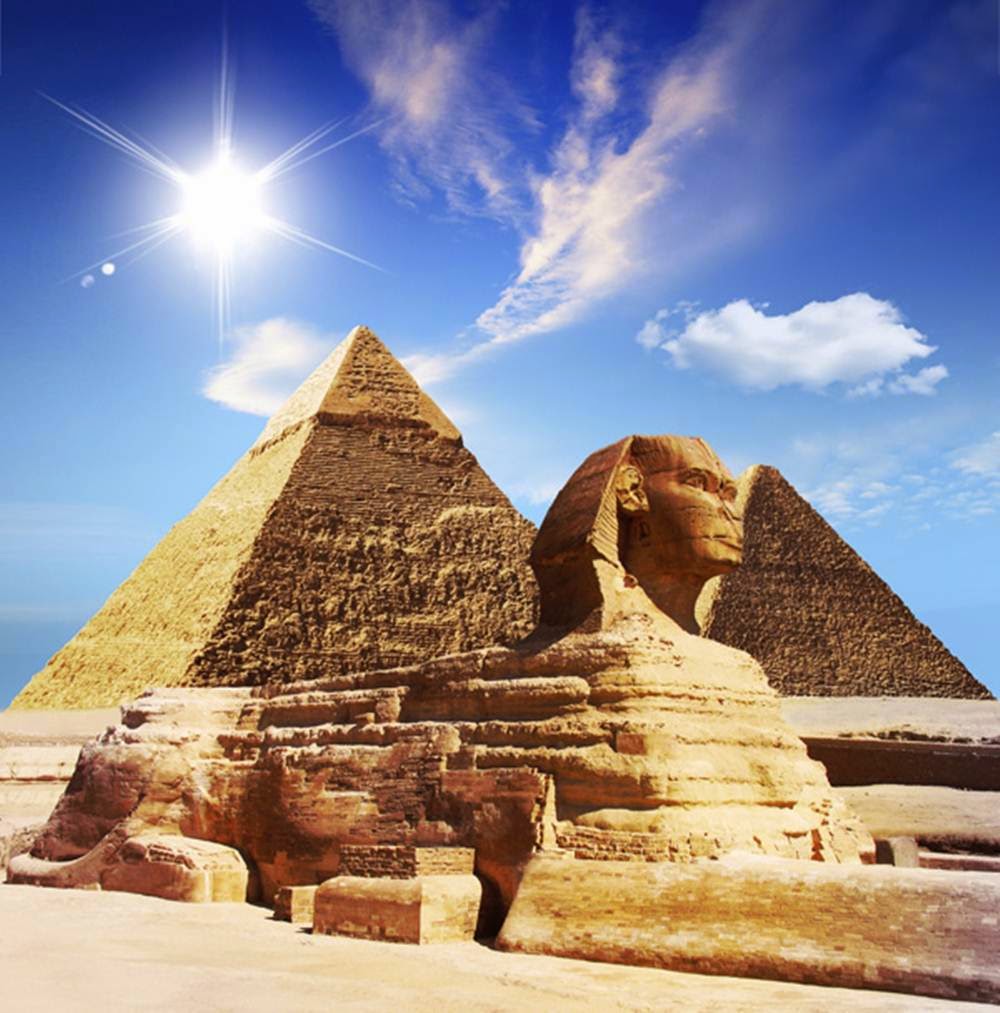

Egypt grew up along the banks of the Nile River and for a long time was the most advanced civilization in its part of the world. Its recorded history begins in 3100 BC, when Upper Egypt (in the south) and Lower Egypt (in the north) were united under King Menes. Starting in the second millennium BC, the king of Egypt was called the "pharoah" and was considered divine.
The Old Kingdom lasted from 2686 - 2181 BC. It was during this time that the great monuments like the Pyramids of Giza and the Great Sphinx were constructed, demonstrating this ancient society' had an exceptional's command of mathematics, engineering, masonry, and logistics.
After a period of instability, the Middle Kingdom lasted from 2050 - 1710 BC, and saw a flourishing of art and the development of Egyptian mythology, a polytheistic system that included the gods Horus, Isis, Osiris, and Anubis.
Another time of instability preceded the New Kingdom, which dawned in 1570 BC and lasted until 1155 BC. This was the height of Egyptian power and the time of some of its most famous rulers. Hatshepsut, daughter of Thutmose I and wife of Thutmose II, reigned as pharaoh (technically as regent for her son, Thutmose III) in the 15th century BC. A century later, Pharaoh Akhenaten and his wife, Queen Nefertiti, experimented with monotheism, restricting worship to the sun-god Aten. Like Hatshepsut before her, Nefertiti ruled as pharaoh after her husband's death. When she died, she was succeeded by possibly the most famous pharaoh, her husband's son Tutankhamen. In the 13th century, Pharaoh Ramesses II is usually identified as the oppressor of the Hebrews in the biblical Book of Exodus.
After the New Kingdom, the power of Egypt declined. The kingdom was defeated by the Assyrians, ruled briefly by the Achaemenid Persians, and finally conquered by Alexander the Great in 305 BC.
Egyptian art and mythology, architecture like obelisks and pyramids, and important technologies such as stonemasonry, hieroglyphics, and papyrus have left a lasting impact on the world.